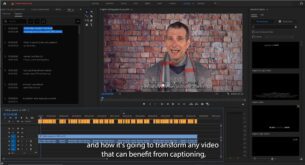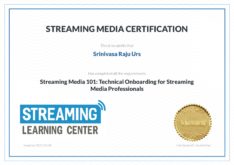My colleague Dan Rayburn at Streaming Media (also a Frost & Sullivan analyst) just released another of his market-defining blog posts, entitled “The Dirty Little Secret About 4K Streaming: Content Owners Can’t Afford The Bandwidth Costs.” As the title suggests, after speaking with content producers before and during CES, Rayburn that few video distributors other than subscription services can afford 4K. Here’s the crux:
At CES, Netflix, Amazon and Comcast talked about their 4K content offerings and all of them disclosed that the bitrates they plan to use to deliver 4K content, using HEVC, will be between 12Mbps-20Mbps. That’s great for Netflix and Amazon, who have subscription-based services and don’t rely on video advertising for revenue, but what about the vast majority of content owners who only make money from their content via advertising?
The average broadcaster, news site and publisher, even the large ones, won’t be able to do 4K streaming as the cost for all the extra bits means they will have a content business they can’t monetize. Just think about how much content you view every day, from major content portals, where the max bitrate is 1Mbps. Why aren’t those websites delivering the video in 3Mbps? The answer you get when you ask them is that they can’t afford the extra bandwidth costs associated with it.
This matches what I’ve been telling attendees in my Streaming Media workshops for several years; here’s a slide from this year’s workshop:

The answer, of course, is that while CNN subscribers could smoothly retrieve and play a 2-3 mbps stream in the US, CNN can’t afford more than 1200 kbps streams in their current business model. So the thought that they could affordably increase that by a factor of ten for 4K strains credibility.
Note that Rayburn isn’t saying that HEVC or VP9 won’t catch on anytime soon; rather, he’s saying that 4K won’t be a motivator for either technology in any meaningful way for several years. As I mentioned in my Streaming Media West presentation about HEVC (video and handout here), implementing HEVC could allow producers now streaming at 720p/1080p to reduce their bandwidth significantly, and still deliver the same quality as H.264. The more efficient streams also allow delivery of higher resolution video to mobile devices that today might be limited to SD, assuming, of course, that mobile devices can play HEVC in a power-efficient manner. Unfortunately, most can’t, and will never be able to; only future generations of devices with HEVC hardware acceleration will be able to.
Sigh. The more I think about it, the more I conclude that HEVC won’t have a significant impact on the general streaming market for several years (which Rayburn said in a January 2013 blog post entitled, “HEVC (H.265) Adaption is at Least Five Years Away for Consumer Content Services”). At 4K and other ultra HD resolutions, the bandwidth costs and paucity of 4K sets will slow adoption, while the inefficiency of mobile playback will slow general-purpose streaming (on this last point, see Frost & Sullivan analyst Avni Rambhia’s presentation at Streaming Media West, entitled, Cutting Through the Hype of HEVC (H.265), handout here.)
If you’re shelling out major bucks for bandwidth to a content delivery network (CDN) or online video platform (OVP), Rayburn’s column also sheds some interesting light on that, for example that Netflix is paying about $.02/GB. Of course, as one comment points out, Netflix is delivering 4.5 billion hours of video per quarter, which is probably slightly more than your website. Still, I’ve seen prices per GB of over $1.00; if that’s where you are, it’s time to renegotiate.
 Streaming Learning Center Where Streaming Professionals Learn to Excel
Streaming Learning Center Where Streaming Professionals Learn to Excel







